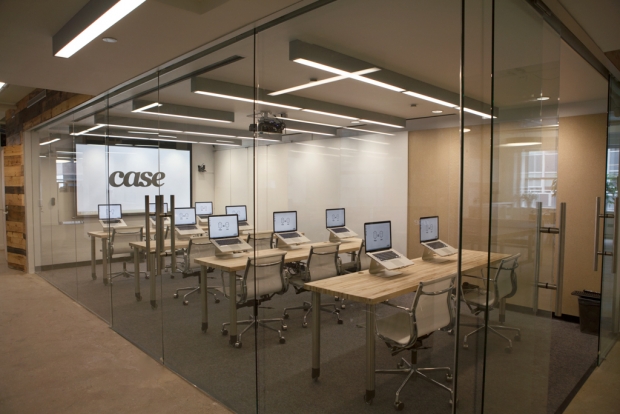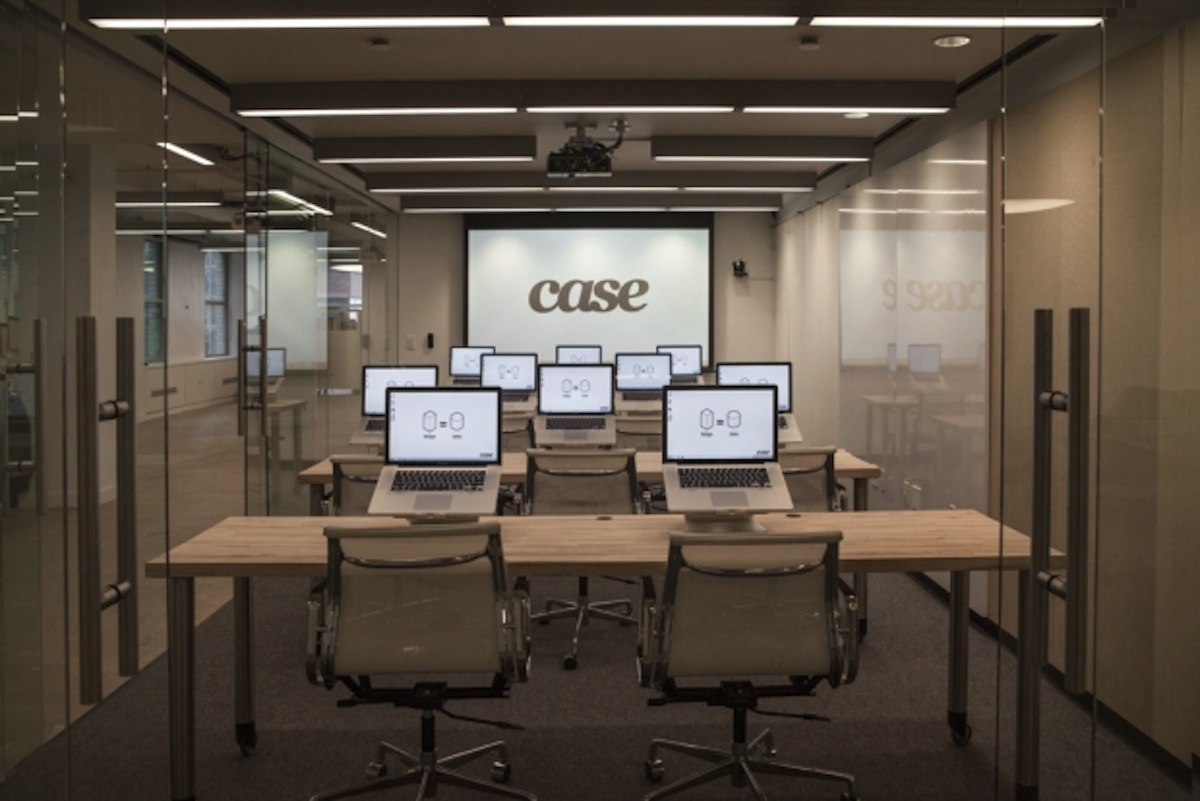Steve Sanderson is a Founding Partner of CASE and oversees all of our strategy and implementation engagements. He is a trusted strategic advisor for many firms going through technology and procedural changes. Recently, Daniel Davis sat down with Sanderson to discuss how firms should approach training in order to gain the most from their investment.
The current state of training in the AEC industry
Davis: How would you describe the current state of training in the industry?
Sanderson: A lot of firms struggle with allocating money and resources towards professional development. They do it within the context of licensure and continuing education but when it comes to things like technical production, a lot of emphasis is placed on on-the-job learning. There is an expectation that people already have these skills from school or from working at other firms. This often isn’t the case and people are expected to pick up these skills as they go. There is a lot of informal training that happens within firms. People within firms that are proficient with a particular technology often get saddled with helping people who are less proficient. This leads to a situation where your most technically proficient staff gets burdened with additional responsibility in addition to their own project work. Unfortunately, we’ve seen a lot of cases where it has led to people getting burnt out and leaving.
Common pitfalls of AEC training
Davis: What are the common pitfalls for companies that are currently investing in training?
Sanderson: People largely look at training as this thing you do once and you check it off. It is not enough to say ‘I sent someone to the Revit class and they are now proficient’. I don’t think that is the case with any aspect of learning. There are numerous degrees of proficiency, skills, and willingness that firms need to factor in. Firms should also recognize that within a platform like Revit there are always different ways that it can be used at different stages of design and production. So there isn’t this blanket idea that one receives Revit training without some type of context. And I think that is where, in an ideal scenario, training is part of a broader implementation effort that directly ties with projects in employing these new technologies and processes. If you combine training with a project, the participants are able to experience the application firsthand and apply it directly to their work. We’ve been more successful in this approach with project teams as opposed to running these sessions in an abstract context in order to check off the box.
The ideal context for BIM training
Davis: So if training should happen in the context of a project, is there a type of project that works best for training?
Sanderson: The specific project is not necessarily that important. However, in a best case scenario, the project is representative of the type of work that a firm generally takes on. Firms should choose a project that provides their teams with a good sense of how this process compares with other projects they’re already familiar and comfortable with. So the project shouldn’t be an extreme outlier. In particular, it shouldn’t be a new building type for the firm, or overly complex, or unusually large. Again, it is not required but it is something that we generally recommend.
When to begin training
Davis: Should teams begin training at the start of the project or is there a more optimum time later in the project?
Sanderson: From a phase perspective, if we are talking about BIM specifically, we generally recommend that project based training begins near the completion of schematic design (SD) or just after the completion of SD. This is normally the point where the type of production that really benefits from this process ramps up. Teams are producing their first real set of drawings and a lot of the major design decisions are starting to settle down. If this is a pilot effort, this is the point where Revit and BIM are best suited.

Who to train
Davis: Who should attend the training?
Sanderson: The makeup of the team is important. Particularly if this is a pilot situation, you want to pick a principal-in-charge, a project manager, and a team that wants to do something differently. Generally, it’s not hard to find people at the principal and team level. Things can be a little more difficult at the project management level, mainly because they are the ones who are ultimately held accountable for delivering the project on time and within a set fee. So they have the most concerns about the impacts that using this new tool will have on meeting those deadlines.
Training for managers
Davis: Should the principals and managers be trained in the same workshop as the people on the project?
Sanderson: Ideally. In the best case scenario, people at all levels would go through the essentials training. It helps the leaders build a certain degree of empathy with what the team is actually doing. I also think it removes a level of abstraction that leaders have when they are unable to directly engage with the work product. Leaders can become dependent on other people to carry out basic tasks like printing stuff or even navigating around a model; tasks that they might have been able to do in CAD or on a drawing board. Having them in the training helps remove this frustration. They may not be using any of these skills on a day-to-day basis, but they would at least have a degree of understanding of what the team is actually doing when they say something like ‘save to central is slow’. In our most recent trainings, we had a number of principals and partners at management level. We always like it when we see people in that management and principal level participate.
CASE offers a range of learning and professional development services. Have a chat with Sanderson learn more about our curriculum development, classroom training, and just-in-time training.
About the Authors: Steve Sanderson is a Founding Partner and the Director of Strategy at CASE, where he is primarily responsible for leading the knowledge and change management efforts for leading AECO clients. His approach considers technology adoption holistically, advising clients on the long-term vision, objectives, management, staffing, platforms and capabilities needed to succeed with any new process. Steve received his Master of Engineering from the Product-Architecture Lab at Stevens Institute and a Bachelor of Science in Industrial Design from Virginia Tech, where he was awarded the 2014 Outstanding Recent Alumni Award. He has been a visiting faculty member at Princeton University and Parsons The New School for Design and speaks internationally on technology innovation at venues such as SIGGRAPH, ENR FutureTech, BIMForum, and AIA events. Contact him at s.sanderson@case-inc.com.
Daniel Davis is a Senior Researcher at CASE where he leads research efforts focused on the impacts of technology on the building industry. Having recently completed his PhD entitled “Modeled on Software Engineering: Flexible Parametric Models in the Practice of Architecture” at RMIT University in Melbourne, Australia, Daniel is particularly interested in the changes to design practice brought about by computation. He has taught internationally on the subject of computational design at universities including RMIT, Melbourne University, and the Royal Danish Academy of Fine Arts. Daniel's research has been published in Architectural Design, International Journal of Architectural Computing, CAAD Futures, and writes a regular technology column for Architect magazine. Contact him at d.davis@case-inc.com.
More from Author
CASE blog | Jul 6, 2015
BIM/VDC training is more than learning the features
Training can be a taxing experience for both the class and the instructor. CASE's Nathan Miller offers four ways to make training more relevant to practitioners.
CASE blog | Jun 4, 2015
Why reality capture is essential for retrofits
Although we rely upon as-built drawings to help us understand the site for our design, their support is as thin as the paper they are printed on, write CASE's Matthew Nelson and Carrie Schulz.
CASE blog | May 10, 2015
How beacons will change architecture
Indoor positioning is right around the corner. Here is why it matters.









